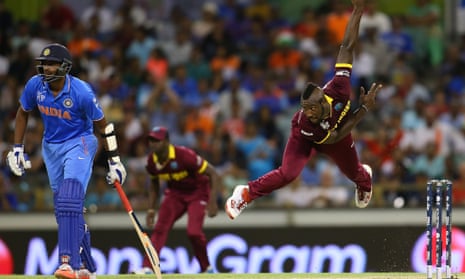Hundreds of millions of cricket fans around the world are up all hours these days to cheer for their teams in the Cricket World Cup. As cricket fans well know, one of the toughest deliveries to face in cricket is a “googly”, where the ball’s movement is discontinuous and difficult to predict, posing a challenge for even the most experienced batsmen.
One-track minds that we are, this reminds us of the challenge we face with climate change – knowing that an unpredictable future is imminent, and feeling uncertain as to how to prepare for it.
One of the trademarks of great batsmen, such as India’s Sachin Tendulkar, has been their resilience, even when facing diverse and unpredictable bowling outcomes. Turns out, the ways in which these athletes handle a “googly” match up quite well with the characteristics cities need to be better equipped to cope with climate change.
Here’s how ...
Reading the conditions
A great batsman is one with a gift for reading both bowler and ball, even before the release. He knows the bowler’s strengths, weaknesses and preferences. He can even detect slight variations in the way the bowler is gripping the seam or angling his wrist. It’s a kind of informed clairvoyance. Similarly, cities need to focus not only on understanding what climate projections suggest for the city, but also on understanding the current vulnerabilities of people, infrastructure and systems that keep the city running, and project how these may change over time.
This requires methods of sensing and information-gathering, robust feedback loops, such as community meetings or monitoring systems that collect and layer together data to give a more accurate and dynamic picture of the city’s strengths, assets, liabilities and vulnerabilities.
Innovation
There’s a stroke in cricket – the Reverse Sweep – that while not a purist’s dream, can sometimes be wickedly effective. Addressing climate change sometimes requires a toolkit of similarly unconventional approaches. Cities need innovations of all kinds: especially redundant systems, alternatives, back-ups and reserves that can be used if needed during a disruption. For instance, having multiple pathways to access water (city supply, water tankers, wells and tanks, grey-water reuse, etc) and back-up energy sources for cooking and boiling water can be extremely valuable to save lives and prevent disease during typhoon recovery. Having a diverse set of capacities that can be mobilised when needed is also important.
Ability to keep calm and carry on
Great batsmen are able to keep their wits about them, even when the game appears to be going catastrophically. In urban resilience terms, this means being able self-regulate and manage when calamity does strike. This requires shifting the mindset from trying to make the city “fail-safe”, to one of safe-failure. Safe failure may mean building self-regulating systems that can isolate a malfunction and prevent cascading disruptions and eventual collapse, while avoiding over-reliance on a single piece of protective infrastructure, such as a levee.
A common gameplan
Cricket is a team sport, and even the most talented batsmen will only succeed if they calibrate their approach to the needs of the day, and the diverse qualities of the rest of the team. Similarly, cities comprise diverse actors with different functions and strengths. Given the complexity of – and connections between – systems that keep a city functioning, effective solutions to climate challenges will require integrated and coordinated action.
Ability to adapt and be flexible
A winning cricketer knows how to handle whatever comes, whether it’s playing in blistering conditions of heat and humidity or the cold and grey gloom of the early English summer. The resilient city is just as adaptive and able to adjust to a disruption by making new plans, taking new actions, or modifying behaviours and mandates to better accommodate the situation.
Inclusive and team-minded
A team is only as strong as its weakest link. So it goes, too, with the resilience of a city. Even if portions of the city are able to withstand floods and storms, these pockets of robustness – whether they are specific wards or populations or sectors – will be crippled if the city as a whole, including marginalised and poor groups, are not able to bounce back from shocks and stresses.
We realise that linking climate change to cricket is a bit of a stretch. But we can’t deny – for us, at least, the game provides some unlikely insights into our urgent need to weather the range of climate impacts that are heading our way.
Cristina Rumbaitis del Rio and Anna Brown are senior associate directors at the Rockefeller Foundation, specialising in climate change and resilience.
Join our community of development professionals and humanitarians. Follow@GuardianGDP on Twitter.
